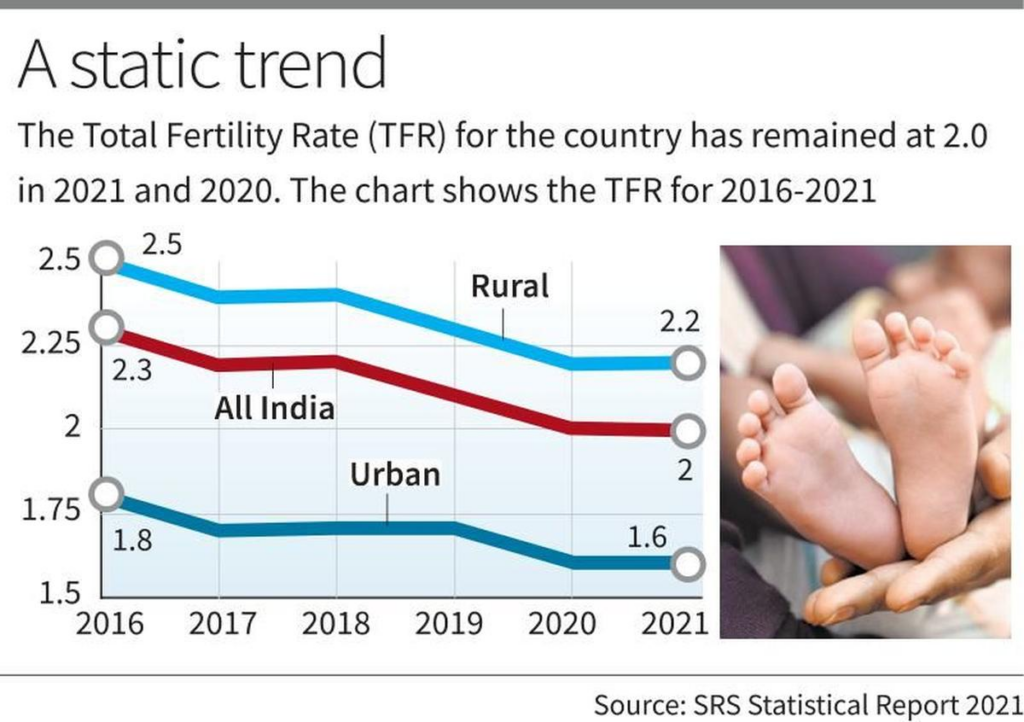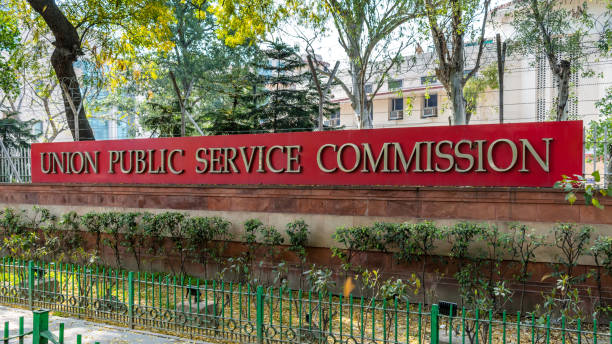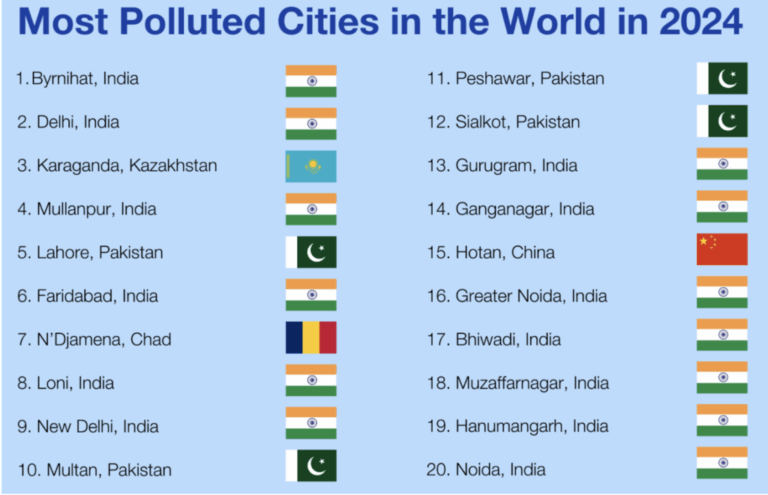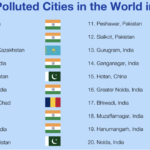India’s Total Fertility Rate at 2.0: Demographic Dividend
The Total Fertility Rate in India remains at 2.0; Bihar records the highest count, and Bengal the lowest. The Sample Registration System (SRS) Statistical Report 2021, released by the Registrar General of India (RGI), presents a crucial snapshot of India’s demographic transition. It confirms that the Total Fertility Rate (TFR), the average number of children born to a woman in her lifetime, stood at 2.0 in 2021, the same as 2020

Highlights
- National Average (2021): 2.0
- Highest: Bihar (3.0)
- Lowest: West Bengal and Delhi (1.4 each)
Age Composition Trends
- 0–14 age group: Down from 41.2% (1971) to 24.8% (2021)
- 15–59 (working-age): Up from 53.4% to 66.2%
- 60+ (elderly): Up from 6% to 9%, with 65+ alone rising from 5.3% to 5.9%
States with the Highest Elderly Populations
- Kerala (14.4%), Tamil Nadu (12.9%), Himachal Pradesh (12.3%)
States with Lowest Elderly Populations
- Bihar (6.9%), Assam (7.0%), Delhi (7.1%
- Mean Age at Effective Marriage (Females): Rose from 19.3 years (1990) to 22.5 years (2021)

Implications
- Demographic Dividend: India is currently in a “demographic sweet spot,” with over 66% of its population in the working-age group (15–59). However, the declining TFR signals a shrinking base of future workers, and this window may close within two decades.
- Emerging Demographic Divide: States like Bihar and Uttar Pradesh, with higher TFRs, will continue to grow rapidly, whereas southern and some eastern states with sub-replacement fertility may see population stagnation or decline, posing inter-state resource and representation challenges.
- Ageing Population: Kerala and Tamil Nadu are entering a phase similar to that of ageing societies in East Asia and Europe. This implies greater healthcare costs, pension burdens, and the need for elderly care infrastructure.
- Policy. While the 2024 interim Budget proposed a high-power committee to tackle “population growth,” the SRS data suggests the real challenge is population ageing and regional imbalance, not an uncontrolled rise.
- Census Delay & Data Gaps India has not conducted a Census since 2011. Without updated population data, evidence-based policymaking remains hampered. The SRS provides estimates, but cannot replace the granularity and accuracy of a Census.
Conclusion
- India is experiencing an advanced demographic transition, evident in its falling TFR, delayed marriage age, and rising elderly population.
- While policymakers continue to frame concerns in terms of overpopulation, the real challenge is managing the post-replacement-level dynamics, ensuring social security, labour force participation, and inter-generational equity in a rapidly changing demographic landscape.
PRELIMS PRACTICE QUESTION
Q. Concerning the recent Sample Registration System (SRS) 2021 report, consider the following statements:
- The Total Fertility Rate (TFR) in India has fallen below the replacement level for the first time since independence.
- Kerala has the lowest TFR among all Indian states.
- The share of the elderly population (60+) has been increasing consistently since 1971, while the proportion of the population in the 0–14 age group has declined.
- The SRS survey provides decadal population census data collected from over 88,000 villages and urban units.
Which of the statements given above is/are correct?
A. 1 and 3 only
B. 3 only
C. 2 and 4 only
D. 1, 3 and 4 only
Correct Answer: (B). 3 only
Explanation:
- Statement 1 – Incorrect: India reached the replacement level TFR of 2.1 in 2019, so this is not the first time it has fallen below.
- Statement 2 – Incorrect: Kerala has a low TFR (1.5), but Delhi and West Bengal have the lowest (1.4).
- Statement 3 – Correct: According to SRS data, there has been a consistent rise in elderly population and a decline in the 0–14 age group since 1971.
- Statement 4 – Incorrect: The SRS is an annual demographic survey, not a decennial census. Also, it covers 8,842 sample units, not 88,000.
Also Read Maternal Mortality Ratio (MMR)







